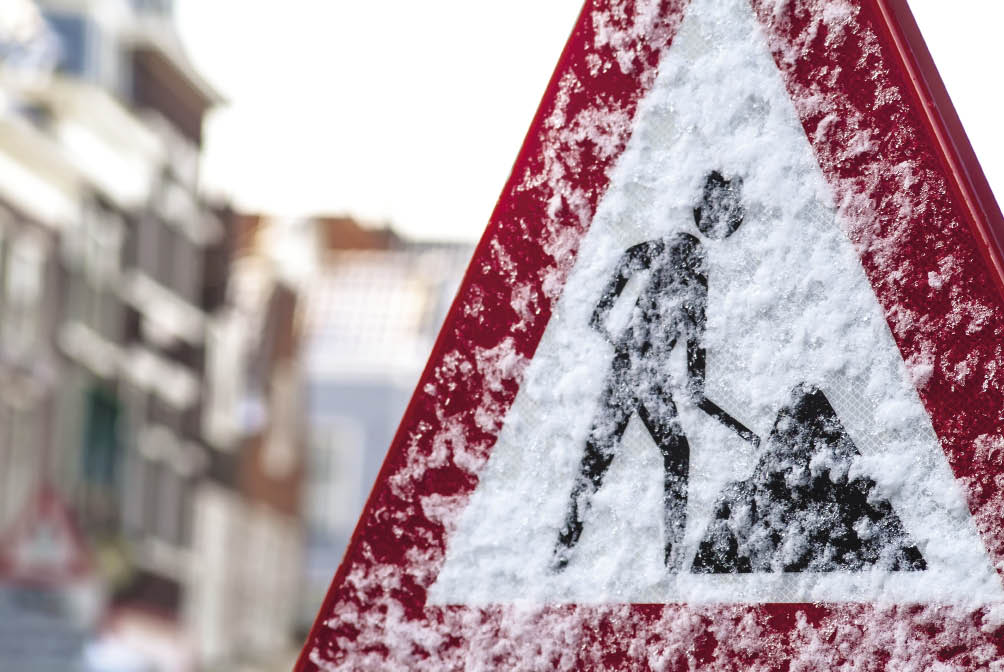
5 ways to protect lone, remote workers during cold Canadian winters
November 11, 2021
By
Gen Handley

Proper preparation prevents poor winter performance. (DutchScenery/Getty Images)
Depending on who you ask, Canada may or may not be the coldest nation on earth.
This vast, beautiful country of ours can certainly get cold in the winter and that presents a range of unique challenges for those who work outdoors or in uninsulated environments.
Ever since the pandemic impacted Canada and every other country on earth, many organizations and industries had to restructure certain aspects of their work and operations in order to work within the “new normal,” and within the new requirements and expectations that came with the pandemic, such as social distancing and isolation from co-workers.
Almost overnight, workers who previously performed their jobs with a team or a partner, now found themselves alone and consequently more vulnerable to safety hazards such as cold weather.
Working in the cold is such a common safety challenge in this country that the Canadian Centre for Occupational Health and Safety (CCOHS) has an entire resource page dedicated to working in frigid, windy conditions safely. Table No. 2 on wind chill hazards provides an accurate picture of what Canadian workers can face in the winter.
So how does an employer or manager tackle such a volatile, uncontrollable and potentially deadly safety hazard? By focusing on five key areas that, together, will result in a safe and happy work environment during the dark, cold months.
Proper clothing and footwear
The most obvious and essential item for winter work is proper clothing and footwear.
Not only will warm, wind and water-proof clothing and footwear protect remote workers from the elements, but it will significantly reduce the likelihood of slipping and injury which increase during winter and can be deadly when employees are alone.
Proper communication devices
Something that must be essential and a priority for lone and remote workers is a secure line of communication in which they can check in with their employer as well as call for immediate help in the case of an emergency.
Such types of communication devices include: a satellite device for GPS tracking if the area has poor cellular coverage, as well as a cell phone for simple texting and instant messaging, and regular check-in with a manager.
Psychologically, this benefits the lone workers as they feel there is someone watching their backs should anything go wrong.
Lone worker safety policy
Let’s face it. Nobody really enjoys the motions of developing safety policies. However, lone worker policies are imperative to a responsible and well-planned work environment where isolated workers will be safe.
Every tool or protocol that is implemented for lone worker safety is outlined by the lone worker policy, a comprehensive guide for the specific safety requirements of your lone workers.
While slightly different from team to team, the pillars of a strong lone worker safety policy are a clear policy purpose statement explaining why this policy was created, a clear explanation of how this policy will help protect your team members, as well as how the policy satisfies your company’s values and goals.
Training and education
Once you have established a lone worker policy, the next step is to determine if any safety training or education is required for those impacted — not only are hands-on training sessions incredibly effective, but they provide great engagement and interaction between the team members.
Training and education also includes preparing ahead of time with a supplies/emergency kit for the winter.
Provide opportunities to warm up
As an employer responsible for people working in cold conditions, it is strongly recommended that you provide spaces and regular breaks for those people to warm up — this can include a running vehicle.
Regardless of the temperatures, the CCOHS recommends that workers drink fluids during physical work but for warming purposes, they suggest hot, non-alcoholic drinks, soup and “caffeinated drinks such as coffee should be limited because it increases urine production and contributes to dehydration.”
Because some employees forget or feel pressure to not take breaks where they can escape the cold, managers should schedule such breaks for the team’s safety.
There are few certainties in life, but one of them is the cycle of seasons and the inevitability of winter here in Canada.
It is easy to dread working in the cold, but having proper, quality clothing and footwear, as well as planned-out policies and training means those of us who work out in the cold can do so comfortably, knowing that we will go home at the end of the day.
Gen Handley is a marketing and growth co-ordinator with SafetyLine Lone Worker in Vancouver.